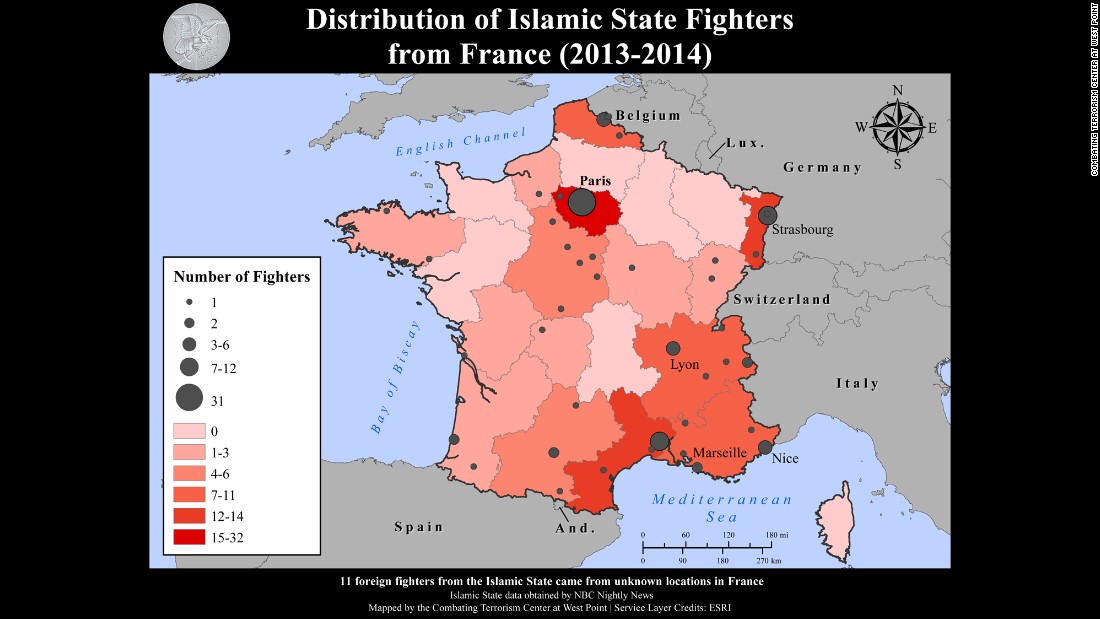Nice, France – A picture is slowly starting to form of what led Nice, France, attacker Mohamed Bouhlel to carry out the deadly terror attack in the Mediterranean resort city.
French Interior Minister Bernard Cazeneuve said Saturday there were indications the attacker had been “radicalized very rapidly.”
CNN learned Sunday that Bouhlel sent a text message shortly before Thursday’s attack to an unknown recipient saying, “Bring more weapons 5 to C,” according to a representative for the Paris prosecutor’s office.
It appears Bouhlel also had serious mental health challenges. His father said he suffered from nervous breakdowns in which he “broke everything,” and that he believed his son’s mental health deteriorated after his separation from his wife.
By all accounts Bouhlel had a volatile personality. In March he was given a six-month suspended prison sentence after throwing a wooden pallet at a driver following a traffic accident. According to reports in the French media, a neighbor said that Bouhlel was so angered when his wife left him that he “defecated all over the place” and shredded his daughter’s teddy bear.
But Bouhlel does not appear to have launched the attack in a sudden fit of anger. The fact he rented the truck three days beforehand suggests it was premeditated, as does the symbolic date chosen: July 14, the French national day, when thousands gather on the Promenade des Anglais in Nice to witness the fireworks.
A source close to the investigation told CNN that local associates of the Nice attacker detained for questioning have told interrogators that Bouhlel started speaking supportively of ISIS days before the attack. Four of his associates were arrested late Friday and early Saturday in Nice.
Lone wolf?
The Nice attacker appears to fit a pattern. In the last two years, multiple terrorist attacks in the West have involved a blend of radicalization and mental health factors, a category of terrorist some analysts such as Max Abrahms have termed “loon-wolves.”
Terrorism analysts are grappling with the reasons behind the spate of such attacks, but there is some consensus that psychological disorders can narrow the pathway between radical thought and action.
One such case was Man Haron Monis, who carried out a hostage attack in Sydney in December 2014 after pledging allegiance to ISIS. At the inquest into the attacks, he was described as unpredictable and a “dangerous psychopath” suffering from narcissistic personality disorder.
Another case in point was Mohammad Abdulazeez, a naturalized American who shot dead four U.S. Marines and a sailor in Chattanooga, Tennessee, in July 2015. Investigators established Abdulazeez was radicalized online, but according to his family he also suffered from bipolar disorder and depression, which were aggravated three months before the attack with his arrest for a DUI.
Orlando shooter Omar Mateen, who claimed his attack was on behalf of ISIS, was described by his ex-wife as “mentally unstable and mentally ill.”
Radical circle?
It is not clear the degree to which the Nice attacker Bouhlel moved in radical circles. Acquaintances have suggested that in the past he had been contemptuous of religion and was not known to go to mosques. Authorities have not said why four of his associates were arrested.
Cazeneuve, the French interior minister, on Saturday reiterated that Bouhlel was not on the radar of French counterterrorism agencies.
But after the attack, investigators ascertained that Bouhlel’s phone number had cropped up in a previous counterterrorism investigation, a source close to the investigation told CNN. That investigation focused on a radical associate of Omar Diaby, a 41-year-old Senegalese jihadi who lived in Nice before traveling to Syria.
Diaby, who calls himself Omar Omsen, commands a French jihadi battalion in Syria affiliated with al Nusra Front, al Qaeda’s branch in Syria. The source said investigators made the link after cross-referencing case files after the attack. Investigators are looking into the nature of the links between Bouhlel and Diaby’s associate and have not discounted they were simply part of same social circle.
While the phone linkages may raise questions about why Bouhlel was not on the radar of counterterrorism services, analysts said it is not uncommon for the target of such investigations to be in touch with dozens or even hundreds of people by phone, many of whom may just be friends or casual acquaintances. Not everybody that a suspect was in touch with can be thoroughly investigated because of resource constraints.
French counterterrorism officials have established that a series of YouTube videos Diaby recorded in Nice in 2012 before he departed for Syria helped motivate a number of French extremists to travel to fight in Syria. In May, Diaby revealed in a Skype interview with a French journalist that he had faked his death in August to get medical treatment outside Syria.

Radicalized Riviera
The Nice attack has highlighted concerns about radicalization in the south of France, a region with a high concentration of first-, second-, and third-generation North African immigrants. Away from the glitz of Cannes and Nice on the seashore, many live in gritty housing projects where unemployment and feelings of alienation run high, making young men and women vulnerable to jihadi preachers such as Diaby.
In its study of ISIS registration documents, the Combating Terrorism Center at West Point discovered about a fifth of French ISIS recruits whose registration documents have been found hail from the southeast coastal region of France.
In early 2014, one of them, Ibrahim Boudina, returned and was arrested in the Cannes area as he prepared a bomb attack that would have potentially targeted the Nice Carnival.
With ISIS claiming credit for inspiring the Nice attack, the worry is more attacks are inevitable.
As reported by CNN
